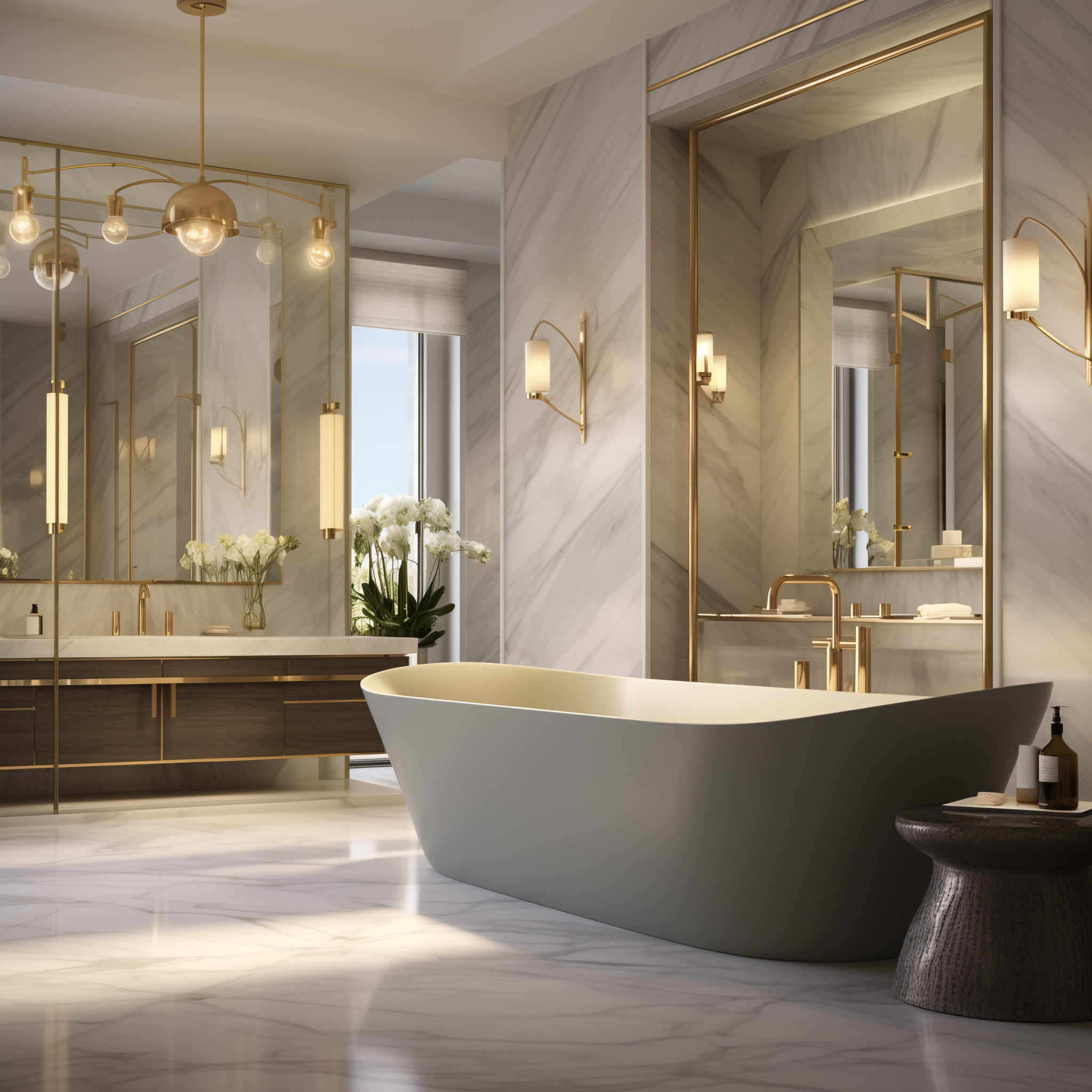The Benefits and Growth Opportunties for AI in Interior Design and Architecture
from Ideation to Project ManagementBathroom concept produced by Michael Gilbride Design using generative AI
In today's rapidly evolving digital landscape, the integration of artificial intelligence (AI) in various industries has become increasingly common. The field of interior design is no exception, as AI technology offers numerous advantages in project management. However, it is essential to understand the pros and cons of incorporating AI into interior design practices, let alone any practice. Let’s explore the benefits and limitations of AI in project management for interior design, highlighting key considerations for professionals in the industry.
Michael Gilbride was recently interviewed in Kitchen and Bath magazine on this topic; read more from the interview here.
Pros of AI in Project Management for Interior Design
Streamlined Workflows
One of the significant benefits of AI in project management is the ability to streamline workflows. AI-powered tools can automate repetitive tasks, and even help lean studios with non-billable work such as generating job descriptions, interview questions, and marketing email subject lines. By leveraging large language models (LLMs), interior designers can save time and effort in creating less compelling work for the studio, allowing them to focus on more critical thinking on their clients’ projects.
Enhanced Collaboration
Generative AI can be incredibly fast to foster collaboration among interior designers, clients, and project stakeholders. Beyond the visual elements of the work, platforms like Chat GPT and G-Suite utilize LLMs to assist on the project management work, perfect for meeting note-taking, key takeaway extraction, and fast follow agenda creation. This technology enables efficient communication and ensures that everyone involved in the project remains on the same page, leading to improved project outcomes.
Improved Efficiency and Accuracy
AI-powered project management tools can enhance efficiency and accuracy in various design-related tasks. For instance, generative AI can assist in creating floor plans based on client data, codes, and location survey information. Genertative AI is incredibly efficient at producing moodboards and client concepts. The idea generation can be helpful to develop a shared visual language with clients, but it is up to the designer to manage expectations around feasibility, budget, and timing.
mood board produced by Michael Gilbride Design using generative AI
Kitchen concept image produced by Michael Gilbride Design using generative AI
Cons of AI in Project Management for Interior Design
AI is Not Automated Work
While AI can provide valuable support in generating ideas and optimizing redundant work, it requires proper prompting to get right. Incorporating AI into my business is very much like hiring an intern to work in your office. Enthusiastic, helpful, but some need a little more coaching to get what you need. Some of these tools are great to recap meetings and next steps without much oversight. Since these LLM are making educated guesses for the next string of words in a sentence or imagery in a picture, you will need to apply some critical thinking to shape what it produces.
While there is improvement with every upgrade, to get great work out of an intern, you have to plan to sit down to give feedback to make a perfect final version of their work, I would recommend you do the same with AI.
Challenges with Precision and Math
AI tools, including LLMs, face challenges when it comes to precision and mathematical calculations. Generative AI is essentially guessing the next words in a sentence, and in turn are guessing the math. Inaccurate results can occur when attempting to summarize project deadlines and due dates, let alone architectural math. Designers must be mindful of these limitations and utilize AI in areas where it can complement their skills effectively.
I yearn for the day I can train an AI on my SOPs, prior project timelines, task dependencies, and current project variables to produce roadmaps and contingencies in a matter of minutes. Math is reported to be coming soon in 2024.
Ethical Considerations
While I love the promise of these LLMs, they are only as good as the data they are trained on. Each company rolling out an LLM train on different information, whether it’s scraped from the internet, your emails, facebook posts, etc. I think it’s fair to say many authors, writers, journalists, artists, content creators, and employees would object to having their work be used to create a $150 billion industry without compensation. Companies from the New York Times to Getty are suing for copyright infringement; that action will change what AI “knows” and can do moving forward. The free lunch of the current state will soon be over, so let’s begin building a world of what ethical AI could look like.
The design and build industry is so custom it’s hard to replicate our work in the same way with something like AI, but where I see opportunity is when we can train it on our own data. How our prior projects, timelines, staff availability, and budgets can inform new client roadmaps and timelines. Where we can use generative AI can create floorplans based on client data, codes, on site sensors, or location survey data that we use our critical thinking to refine for a final design.
There’s this tension to have data driven decisions in creative industries (design, fashion, music art) where some of the best work is lead by human intuition. AI can take on the first drafts and we can leverage our cognitive energy for refining, pushing boundaries, and creativity that the models haven’t learned just yet.
Final Thoughts
AI has the potential to revolutionize project management in the interior design industry. It offers streamlined workflows, enhanced collaboration, and improved efficiency. However, designers must also be aware of the limitations of AI, including its imprecision and inaccuracy. By leveraging AI as a supportive tool and considering ethical implications, interior designers can harness the power of AI to optimize project management processes and deliver exceptional results for the clients.



